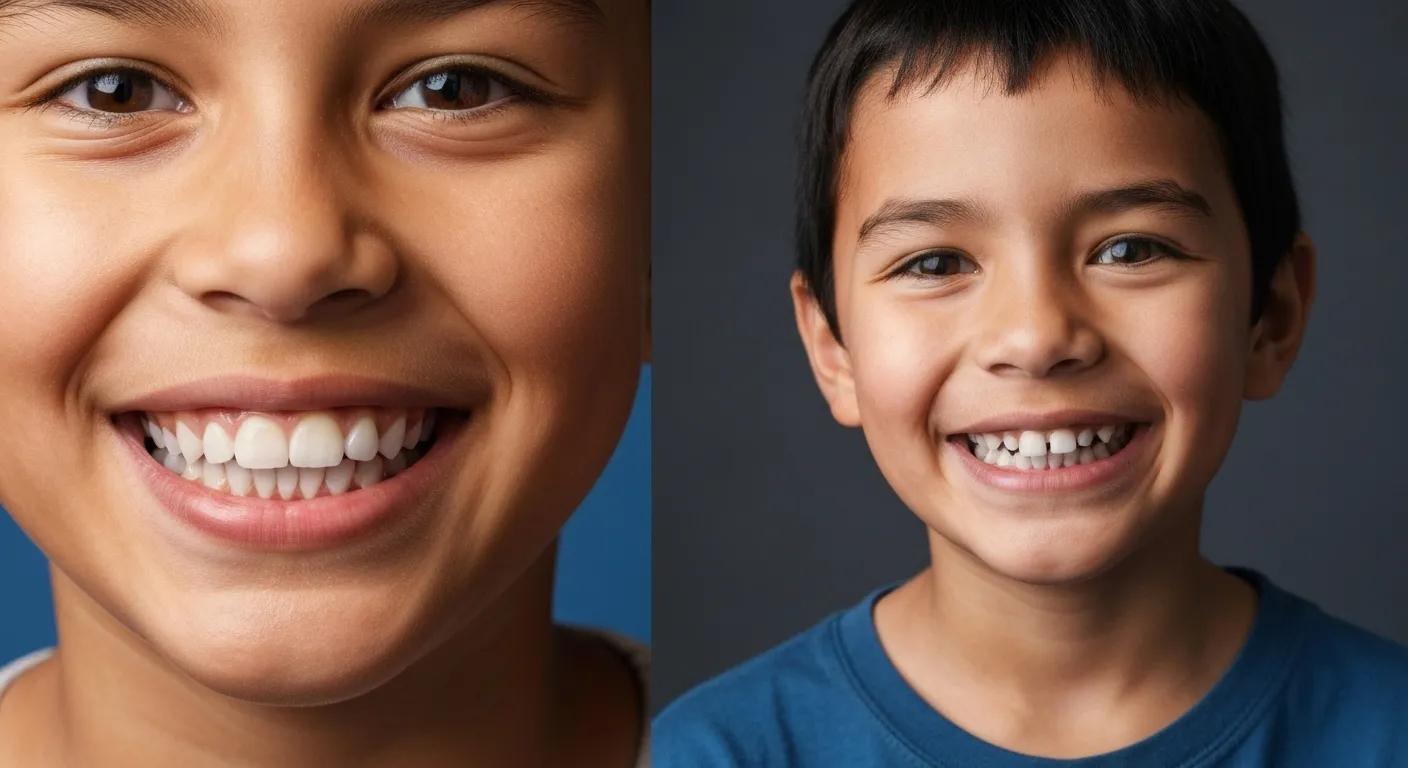Detecting dental alignment issues early can spare your child from complex treatments later and help them grow a confident, healthy smile. This guide answers what are the most common signs that braces are needed for my child, explains harmful oral habits, clarifies when to see an orthodontist, highlights the benefits of early intervention, and shows how parents can support treatment at home. Village Dental Group’s in-house orthodontist, Dr. Garrison Copeland, combines advanced technology and a holistic approach to diagnose and treat pediatric orthodontic issues before they become serious. You’ll learn to spot crooked or crowded teeth, identify bite problems like overbites and crossbites, understand how thumb sucking or mouth breathing affects jaw growth, and know why age 7 is key for a first evaluation. By the end, you’ll feel equipped to schedule a consultation, navigate early treatment options, and help your child maintain a bright, healthy smile.
What Are the Most Common Signs That Your Child Needs Braces?
Crooked or uneven teeth often indicate that a child’s jaw and permanent teeth aren’t developing in harmony, which can lead to improper cleaning and increased risk of decay. Misaligned teeth disrupt normal bite function, causing wear on enamel and even speech difficulties. Early recognition of these issues can prompt interceptive orthodontics that guide jaw growth and reduce future treatment complexity.
Parents should watch for:
| Sign | Implication |
|---|---|
| Teeth that overlap or twist | Indicates lack of space in the dental arch. |
| Noticeable gaps between teeth | Can weaken bite force distribution. |
| Difficulty biting or chewing | Suggests uneven tooth contact and bite problems. |
These visible indicators signal that permanent teeth may be erupting without enough space or proper guidance. Recognizing these signs leads naturally to examining malocclusion types and jaw alignment in more detail.
Crooked, Crowded, or Gapped Teeth Indicate Orthodontic Issues
Crooked teeth arise when there isn’t sufficient room in the jaw for permanent teeth, resulting in crowding or rotation that traps food and plaque. Crowding increases the chance of cavities and gum inflammation because cleaning becomes challenging. Gaps, or diastemas, can weaken bite force distribution and lead to uneven enamel wear. Addressing these alignment problems early with braces or expanders promotes even tooth spacing and simplifies oral hygiene, paving the way for healthier long-term dental outcomes.
Understanding Overbite, Underbite, and Crossbite in Children
An overbite occurs when upper front teeth significantly overlap lower front teeth, potentially causing gum irritation or jaw pain. An underbite has lower front teeth extending beyond the upper row, which can strain jaw joints and impair speech. A crossbite results when some upper teeth bite inside the lower arch, risking uneven tooth wear and facial asymmetry. Correcting these malocclusions with appliances prevents complications like jaw discomfort and supports balanced facial growth.
Jaw Misalignment Can Affect Your Child’s Oral Health
Jaw misalignment disrupts how teeth meet, leading to uneven chewing forces, enamel erosion, and possible temporomandibular joint (TMJ) discomfort. Misaligned jaws can also affect breathing patterns and posture. Early orthodontic evaluation can employ growth-guidance appliances to steer the jaw into proper position, reducing the likelihood of TMJ pain and improving overall oral function as permanent teeth emerge.
| Malocclusion Type | Description | Potential Issues |
|---|---|---|
| Crooked/Crowded Teeth | Insufficient jaw room causes rotation or overlapping. | Difficulty cleaning, increased cavities, gum inflammation. |
| Gapped Teeth (Diastemas) | Spaces between teeth. | Weakened bite force, uneven enamel wear. |
| Overbite | Upper front teeth significantly overlap lower front teeth. | Gum irritation, jaw pain. |
| Underbite | Lower front teeth extend beyond upper row. | Strained jaw joints, impaired speech. |
| Crossbite | Some upper teeth bite inside the lower arch. | Uneven tooth wear, facial asymmetry. |
| Jaw Misalignment | Disruption in how teeth meet. | Uneven chewing forces, enamel erosion, TMJ discomfort, breathing issues. |
How Do Oral Habits Like Thumb Sucking and Mouth Breathing Affect Your Child’s Teeth?
Prolonged thumb sucking or pacifier use applies constant pressure on front teeth and the roof of the mouth, which can push upper teeth forward and create an open bite. Habitual mouth breathing often stems from nasal obstruction and places the tongue low in the mouth, restricting normal palate development and crowding teeth. These behaviors alter jaw growth patterns and bite alignment, making early habit intervention crucial for preventing malocclusions.
Common oral habits to monitor:
| Habit | Concern |
|---|---|
| Habitual thumb or pacifier sucking | Persisting beyond age four can affect tooth and jaw development. |
| Breathing through the mouth | During rest or sleep, can impact palate development and tooth alignment. |
When these habits continue past formative dental years, they can warp the dental arch and complicate future orthodontic efforts. Addressing habits sets the stage for a successful first orthodontic consultation.
Prevalence of Malocclusion and the Need for Early Orthodontic Treatment in Children
Most orthodontists agree that elimination of oral habits and orthopaedic treatment of class 3 malocclusion and posterior cross bites deserve treatment at an early age. Early treatment was proposed along the lines of “catch them in the young”, and “you see it, you treat it” is the main ideology of Early Orthodonticc Treatment (EOT). Furthermore, the majority of children have habits driving the malocclusion. Mouth breathing, tongue thrusting and incorrect swallowing patterns are all known causes of malocclusion and poor facial growth.
When Thumb Sucking Becomes a Dental Problem
Thumb sucking is normal in infants and toddlers, but if it continues past age four or intensifies with erupting permanent teeth, it can force upper front teeth outward and create an open bite. At that point, orthodontic guidance may involve habit-breaking appliances and positive reinforcement to redirect the sucking reflex and protect jaw development.
Dental Consequences of Mouth Breathing in Children
Mouth breathing lowers tongue positioning, causing a narrow palate and crowded teeth. Reduced nasal airflow can also dry oral tissues, raising the risk of gum inflammation and cavities. Encouraging nasal breathing and treating underlying allergies or airway issues can restore proper tongue posture and support healthy jaw growth.
Tongue Thrusting Can Affect Speech and Teeth Alignment
Tongue thrusting against front teeth when swallowing or speaking can push teeth forward, creating gaps and bite issues. This habit often leads to lisps or unclear pronunciation of sounds like “s” and “t.” Myofunctional therapy combined with orthodontic appliances can retrain tongue rest position and swallowing patterns, improving both alignment and speech clarity.
| Oral Habit | Mechanism of Harm | Dental/Oral Consequences |
|---|---|---|
| Thumb/Pacifier Sucking (prolonged) | Constant pressure on front teeth and palate. | Upper teeth pushed forward, open bite, altered jaw growth. |
| Mouth Breathing | Low tongue position, restricted nasal airflow. | Narrow palate, crowded teeth, dry oral tissues, gum inflammation, cavities. |
| Tongue Thrusting | Tongue pushes against front teeth during swallowing/speaking. | Pushed-forward teeth, gaps, bite issues, lisps, unclear pronunciation. |
When Should Your Child See an Orthodontist for the First Time?
Early orthodontic evaluation by age 7 allows specialists to assess jaw growth, bite relationships, and erupting permanent teeth. At this stage, approximately half of the adult teeth have appeared, enabling the orthodontist to detect emerging malocclusions and intervene before problems worsen. This preventive approach leverages natural growth patterns to simplify later treatment and reduce the need for extractions or surgery.
| Treatment Phase | Age Range | Recommended Action |
|---|---|---|
| Initial Screening | Around 7 | Conduct dental exam, X-rays, and growth assessment |
| Growth Guidance Phase | 8–10 | Use expanders or partial braces to direct jaw development |
| Comprehensive Alignment | 11–14 | Apply full braces once most permanent teeth are present |
Evaluating at age 7 sets the course for effective growth-guidance treatment. Understanding these phases leads into the long-term benefits of .
Age 7 is Recommended for an Orthodontic Evaluation
By age 7, most children have a mix of primary and permanent teeth, allowing the orthodontist to evaluate jaw alignment and space availability. Interceptive treatment at this stage uses growth potential to correct bite issues, reducing complexity and duration of later full-braces treatment.
Read more about Affordable Orthodontic Treatments That Transform Smiles
The First Orthodontic Consultation for Your Child
The initial visit includes a thorough dental exam, bite analysis, X-rays or digital scans, and a discussion of treatment goals. The orthodontist will outline a customized plan, explaining how appliances can guide tooth eruption and jaw growth. Parents receive clear guidance on timing, expected outcomes, and care responsibilities.
Early or Late Loss of Baby Teeth Signals Orthodontic Needs
Losing baby teeth too early can allow adjacent teeth to drift and block permanent teeth, while late loss can impede proper eruption. Monitoring tooth-loss patterns helps the orthodontist determine if space maintainers or early braces are necessary to preserve alignment and avoid future crowding.
What Are the Benefits of Early Orthodontic Treatment for Children?
Early orthodontic treatment uses growth phases to address bite and alignment issues before they become severe. Interceptive care promotes proper jaw development, creates space for permanent teeth, and reduces the likelihood of invasive procedures later. Children also gain improved oral function, clearer speech, and boosted self-esteem as their smiles align.
Key advantages include:
| Advantage | Description |
|---|---|
| Guided jaw growth | Prevents severe malocclusions and creates space for permanent teeth. |
| Reduced need for extractions or surgery | Addresses issues proactively, simplifying later treatment. |
| Enhanced confidence and social comfort | Boosts self-esteem during formative years with an aligned smile. |
These benefits illustrate why taking action now supports healthier, more predictable outcomes. Next, we’ll explore how parents can reinforce these gains at home.
Early Intervention Can Prevent More Complex Problems Later
Directing jaw growth and spacing early can eliminate the need for tooth removal and shorten overall treatment time. Phase 1 appliances can correct crossbites and overbites before skeletal patterns become fixed, making subsequent full-braces phases simpler and shorter.
Orthodontic Care Improves Your Child’s Speech and Confidence
Aligning teeth and jaws eliminates lisps, reduces strain on speech muscles, and makes pronunciation clearer. A straight smile often bolsters self-image, encouraging children to engage socially without hesitation and fostering positive peer interactions.
Treatment Options Available for Young Children
Young patients may receive removable expanders, partial braces, or habit-breaking appliances tailored to their growth stage. Each option guides jaw development and tooth eruption, setting up a smoother transition to comprehensive braces when most adult teeth have arrived.
| Benefit Category | Specific Advantage | Impact |
|---|---|---|
| Preventive Care | Avoids complex problems, reduces need for extractions/surgery. | Shorter, simpler future treatment; leverages natural growth. |
| Functional Improvement | Improves speech clarity, oral function. | Eliminates lisps, reduces strain on speech muscles. |
| Psychological Well-being | Boosts confidence and self-esteem. | Encourages social engagement, fosters positive peer interactions. |
| Treatment Options | Removable expanders, partial braces, habit-breaking appliances. | Tailored to growth stage, guides jaw development and tooth eruption. |
How Can Parents Support Their Child’s Orthodontic Journey at Home?
Consistent care and encouragement at home reinforce the success of in-office orthodontic treatment. Parents play a vital role in maintaining oral hygiene, monitoring appliance wear, and managing habits that affect alignment. Proactive support creates a positive experience and ensures treatment stays on track.
Parents can:
| Action | Importance |
|---|---|
| Encourage brushing and flossing | After every meal to protect brackets, wires, and prevent decay. |
| Supervise appliance wear time | Ensures effectiveness of removable appliances and celebrates progress. |
| Maintain follow-up visits | As recommended by the orthodontist to monitor progress and make adjustments. |
Active involvement at home strengthens the results achieved in the clinic and nurtures lifelong habits. Keeping these practices consistent leads to a confident, healthy smile that lasts.
Early detection and guided treatment pave the way for a lifetime of dental health and confidence. Village Dental Group’s holistic approach and in-house orthodontist Dr. Garrison Copeland ensure personalized care from the very first evaluation. By recognizing signs early, addressing harmful habits, and maintaining diligent home support, parents help their children avoid complex procedures down the road. Investing in interceptive orthodontics today means a brighter smile and easier treatment tomorrow.
Ready to Ensure Your Child’s Healthy Smile?
Don’t wait for dental issues to become more complex. Early intervention can make a significant difference in your child’s oral health and confidence. Contact Village Dental Group today to book a consultation with Dr. Garrison Copeland and take the first step towards a lifetime of healthy smiles for your child. Contact us Now to book your appointment and bring back your brightest smile!




